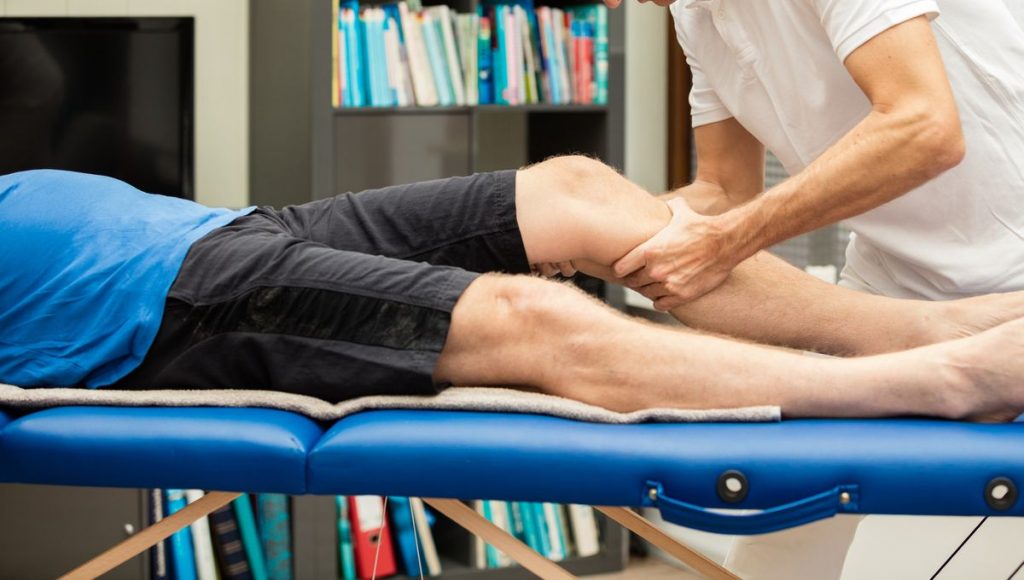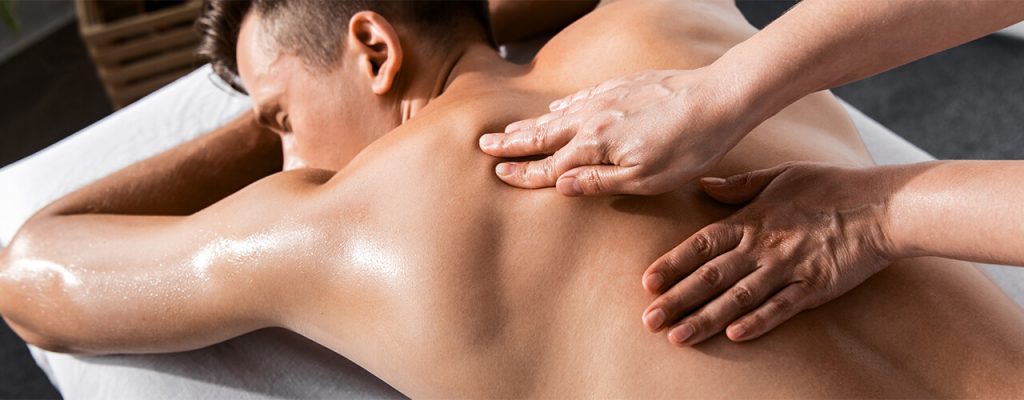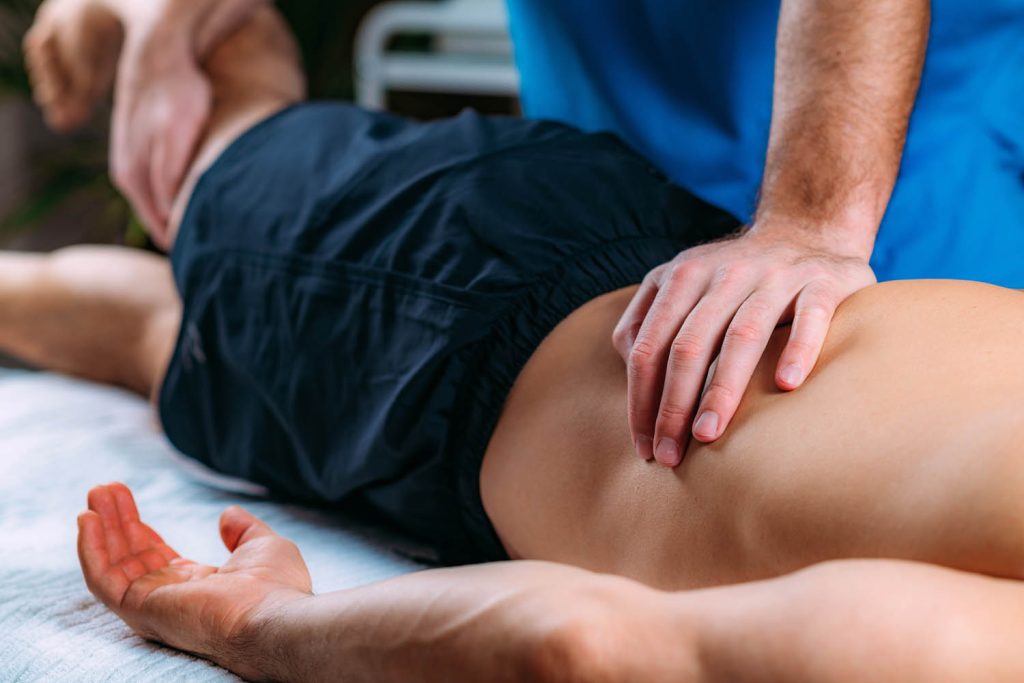Sports massage therapy is a specialized form of massage that focuses on the specific needs and demands of people involved in sports and other physical activities. It is designed to enhance athletic performance, prevent injuries, and speed up the recovery process. Sports massage therapists use a variety of techniques, including deep tissue massage, myofascial release, and Swedish massage, to address muscle tension, soreness, and spasms. By improving blood flow, reducing muscle inflammation, and promoting muscle relaxation, sports massage therapy helps athletes and active individuals maintain optimal physical condition and improve their overall quality of life. Whether you are a weekend warrior or a professional athlete, sports massage therapy can play a vital role in injury prevention and promoting faster recovery times.
Benefits of Sports Massage
Sports massage therapy offers several benefits that can enhance an athlete’s performance and overall well-being. One of the key advantages is its ability to improve flexibility. By targeting specific muscles and joints, sports massage can help increase joint range of motion, allowing athletes to move more freely and perform at their best.
Another significant benefit is the role sports massage plays in aiding recovery. Intense physical activity can lead to muscle soreness, fatigue, and tightness. Sports massage helps alleviate these symptoms by decreasing muscle tension and promoting relaxation. This allows athletes to recover quicker and get back to their training routine more effectively.
Furthermore, sports massage has been shown to aid in the prevention of injuries. By addressing muscle imbalances and reducing tension, it helps minimize the risk of potential injuries caused by overuse or improper technique. Regular sports massage sessions can also help identify and address any areas of tightness or weakness before they develop into more serious problems.
In addition to these physical benefits, sports massage can have a positive impact on an athlete’s overall well-being. It has been reported that sports massage can improve mood, reduce anxiety, and decrease stress levels. This combination of physical and mental benefits can contribute to an increased sense of well-being, enabling athletes to perform better in their respective sports.
Types of Sports Massage
Sports massage therapy offers various techniques tailored to meet the specific needs of athletes. The type of sports massage used depends on factors such as the athlete’s goals, injury prevention, and performance enhancement. One commonly used technique is Swedish massage, which involves long, flowing strokes to relax the muscles and promote blood circulation. Deep tissue massage, on the other hand, targets the deeper layers of muscle and connective tissue to address chronic pain and aid in injury recovery. Myofascial release focuses on releasing tension in the fascia, the connective tissue that surrounds and supports muscles. Another popular technique is clinical massage, which applies a collection of massage methods to address specific athletic injuries. Each type of sports massage offers unique benefits and can play a vital role in an athlete’s training and recovery process. By choosing the appropriate type of massage, athletes can optimize their performance and maintain their physical well-being.

Swedish Massage
Swedish Massage is a popular type of massage therapy that offers numerous benefits for overall relaxation and rejuvenation. This technique utilizes gentle and flowing strokes, along with kneading and tapping motions, to create a sense of deep relaxation throughout the body.
One of the key benefits of Swedish Massage is its ability to reduce stress. The long, gliding strokes help to calm the nervous system and promote a state of deep relaxation, leading to mental and emotional stress reduction. This type of massage also helps to decrease muscle tension and pain, making it an excellent choice for individuals looking for pain relief.
Improved circulation is another advantage of Swedish Massage. The techniques used in this type of massage help to increase blood flow and oxygen throughout the body, which has a positive effect on energy levels and overall alertness.
Swedish Massage is also effective in reducing muscle soreness. The kneading and tapping motions used in this technique help to release tension in the muscles, promoting faster recovery time after physical activity.
Overall, Swedish Massage offers a holistic approach to relaxation and rejuvenation. Its gentle and flowing strokes, combined with the use of kneading and tapping motions, create a sense of deep relaxation throughout the body. Whether you’re seeking stress reduction, pain relief, or improved circulation, Swedish Massage can provide a truly rejuvenating experience.
Deep Tissue Massage
Deep Tissue Massage is a therapeutic technique that focuses on releasing tension and tightness in the deeper layers of muscle tissue. Unlike Swedish Massage, which uses long, gliding strokes, Deep Tissue Massage utilizes slower, more targeted pressure to reach the underlying muscles.
The primary benefit of Deep Tissue Massage is its ability to provide pain relief. By targeting specific areas of the body that are experiencing chronic muscle tension or injury, this technique helps to alleviate discomfort and improve mobility. This makes it particularly effective for individuals dealing with muscle spasms, muscle soreness, and muscle tension.
While similar to Sports Massage in its goal of treating specific areas of the body, Deep Tissue Massage differs in its approach. Sports Massage focuses on enhancing athletic performance and preventing sports-related injuries, while Deep Tissue Massage is primarily used for pain management and releasing tight muscles.
For individuals seeking relief from muscle tightness and chronic pain, therapeutic deep-tissue massage provides a targeted approach. By accessing the deeper layers of muscle tissue, this technique offers a greater level of muscle release and relief. Whether you’re an athlete dealing with sports-related injuries or an individual experiencing chronic pain, Deep Tissue Massage offers an effective treatment option.
Soft Tissue Massage
Soft tissue massage is a specialized technique that focuses on treating the muscles, tendons, and ligaments of the body. Unlike deep tissue massage, which primarily addresses pain relief, soft tissue massage aims to increase flexibility, reduce muscle tension, and promote relaxation.
By targeting the soft tissues of the body, this form of massage therapy helps to improve the range of motion and enhance performance. It is a valuable component of sports massage therapy, particularly for athletes and individuals engaged in physical activities.
Soft tissue massage is highly beneficial in reducing muscle tension and preventing injuries. It helps to release knots, adhesions, and tightness in the muscles, allowing for better movement and flexibility. This is particularly important for athletes who rely on optimal muscle function for their sport. The relaxation benefits of soft tissue massage also aid in stress reduction and mental well-being.
In sports massage therapy, soft tissue massage plays a vital role in preparation for competitions and training sessions. It promotes faster recovery by stimulating blood flow to the muscles, speeding up the removal of waste products, and promoting the delivery of oxygen and nutrients. Additionally, soft tissue massage can help alleviate post-workout muscle soreness and reduce the risk of muscle spasms and injuries.
Therapeutic Massage
Therapeutic massage encompasses a variety of techniques that target different aspects of the body to promote relaxation, healing, and overall well-being. Here are four common types of therapeutic massage and their unique benefits and applications:
1. Swedish Massage: This gentle and soothing massage technique uses long strokes, kneading, and circular movements to release tension, increase blood flow, and promote deep relaxation. It is ideal for stress relief, improving circulation, and enhancing overall relaxation.
2. Deep Tissue Massage: This massage technique focuses on realigning deeper layers of muscle and connective tissue. Using firm pressure and slower strokes, helps to release chronic muscle tension, improve posture, and alleviate muscle pain. Deep tissue massage is particularly beneficial for individuals with chronic pain, muscle injuries, and limited mobility.
3. Sports Massage: Designed specifically for athletes and active individuals, sports massage focuses on preventing and treating sports-related injuries and enhancing athletic performance. It involves a combination of techniques such as stretching, compression, and cross-fiber friction to improve flexibility, reduce muscle soreness, and promote faster recovery.
4. Clinical Massage: This therapeutic approach is tailored to address specific medical conditions or injuries. Clinical massage techniques may include myofascial release, trigger point therapy, and neuromuscular therapy. It is commonly used to alleviate chronic pain, relieve muscle spasms, and improve overall mobility and function.
Each type of therapeutic massage has its own set of benefits and applications, catering to different needs and conditions. Whether you are seeking relaxation, injury prevention, pain relief, or specific medical treatment, a skilled therapist can customize a massage session to meet your unique needs.
Who Can Benefit From Sports Massage?
Sports massage therapy is not just for professional athletes but can be beneficial for anyone who leads an active lifestyle or participates in regular physical activity. Weekend warriors, amateur athletes, and fitness enthusiasts can all benefit from sports massage to improve their performance, prevent injuries, and aid in their recovery time. It is especially helpful for individuals who engage in high-intensity activities or repetitive motions that can lead to muscle tension, soreness, and the risk of injury. Sports massage also offers therapeutic benefits for those dealing with chronic pain, muscle imbalances, or limited range of motion. Whether you are a seasoned athlete or just starting on your fitness journey, sports massage can be a valuable tool to enhance your athletic performance and improve your overall quality of life.
Amateur Athletes
Amateur athletes can greatly benefit from sports massage therapy to enhance their performance and improve their overall well-being. Sports massage can play a crucial role in reducing muscle soreness and speeding up the recovery time after intense physical activities.
One of the primary benefits of sports massage therapy for amateur athletes is its ability to alleviate muscle soreness. Intense workouts and training can lead to the accumulation of lactic acid in muscles, causing discomfort and soreness. Sports massage helps to increase blood flow and lymphatic circulation, which aids in flushing out metabolic waste and reducing inflammation, consequently easing muscle soreness.
Additionally, sports massage therapy can expedite the recovery time for amateur athletes. The manipulation of soft tissues through various techniques enhances the flow of nutrients and oxygen to the muscles, facilitating the healing process. This results in a faster recovery time and allows athletes to bounce back quicker, ready for their next training or competition.
There are several techniques utilized in sports massage therapy that are particularly beneficial for amateur athletes. These techniques include deep tissue massage, myofascial release, and passive stretching. Deep tissue massage targets the deeper layers of muscle tissue, promoting muscle relaxation and decreasing tension. Meanwhile, myofascial release focuses on releasing the tension in the connective tissue, aiding in flexibility and range of motion. Lastly, passive stretching helps to lengthen muscles, improving overall flexibility and reducing the risk of injury.
Professional Athletes
Professional athletes can greatly benefit from sports massage therapy in several ways. One of the main advantages is its ability to enhance their recovery from intense exercise and competition. Sports massage helps to reduce the onset of muscle soreness, allowing athletes to bounce back quicker and perform at their best.
By increasing blood flow and lymphatic circulation, sports massage aids in flushing out metabolic waste and reducing inflammation. This promotes faster recovery and accelerates the healing process for professional athletes. Additionally, sports massage promotes muscle relaxation, alleviating tension and reducing the risk of muscle spasms and injuries.
Various techniques used in sports massage are particularly effective for professional athletes. Deep tissue massage targets the deeper layers of muscle tissue, providing a firm and intense pressure to release tension and promote muscle relaxation. Myofascial release focuses on the connective tissue, improving flexibility and range of motion. Passive stretching lengthens muscles, enhancing overall flexibility and reducing the risk of injury during athletic performance.
Moreover, sports massage therapy plays an important role in passive recovery for elite athletes. Passive recovery refers to the time when an athlete is not actively engaging in physical exercise but still requires effective recovery methods. Sports massage can enhance this process by reducing muscle soreness, promoting relaxation, improving blood flow, and aiding in the removal of metabolic waste.
Overall, sports massage therapy is a valuable tool for professional athletes, enabling them to recover faster and optimize their performance at the highest level.
What are the Techniques Used in Sports Massage?
Sports massage therapy utilizes a variety of effective techniques to address the specific needs of athletes. One such technique is deep tissue massage, which applies firm pressure to target the deeper layers of muscle tissue. This helps release tension, reduce muscle spasms, and promote relaxation. Another technique is myofascial release, which focuses on the connective tissue to improve flexibility and enhance range of motion. Passive stretching is also commonly used in sports massage to lengthen muscles and enhance overall flexibility, reducing the risk of injury during athletic performance. By using these techniques, sports massage therapists can provide athletes with the necessary support to achieve their peak performance and optimize their recovery process.

Firm Pressure Techniques
Firm pressure techniques are commonly utilized in sports massage therapy to target specific muscle groups and aid in achieving optimal athletic performance. These techniques apply deeper pressure to the muscle tissue, which can have various effects on blood pressure.
The application of firm pressure in sports massage therapy can stimulate blood flow and circulation, leading to improved oxygen and nutrient delivery to the muscles. This enhanced blood flow can help relieve muscle tension, alleviate muscle soreness, and promote faster recovery time after intense physical activity. However, sports massage therapists must be aware of the potential impact on blood pressure and adjust the techniques accordingly for individuals with high or low blood pressure.
Compared to other massage techniques like Swedish massage, which primarily focuses on relaxation and gentle strokes, firm pressure techniques in sports massage therapy are more intense and target specific areas of muscular tension. These techniques involve the use of strong, deep strokes that apply pressure to both the superficial and deeper layers of muscle tissue.
Common firm pressure techniques used in sports massage therapy include deep tissue massage, myofascial release, and trigger point therapy. Deep tissue massage involves slow, deep strokes to penetrate the deeper layers of muscle tissue. Myofascial release aims to release tension in the connective tissue surrounding the muscles, while trigger point therapy targets specific points of muscle spasms or knots.
By employing these firm pressure techniques, sports massage therapists can effectively address muscle imbalances, prevent injuries, improve athletic performance, and promote a faster recovery process. It is important to consult with a qualified sports massage therapist to determine the most suitable techniques based on individual needs and considerations.
Skill Levels for Different Types of Practices
For beginners or those starting in sports massage therapy, a foundational understanding of basic massage techniques is essential. This includes knowledge of Swedish massage, which forms the basis for many massage therapies. They should be proficient in using general pressure and techniques to promote relaxation and relieve muscle tension.
Intermediate-skill level therapists should possess a deeper understanding of anatomy and physiology. They should have the ability to assess and address specific issues related to athletic injuries and muscle imbalances. Techniques such as deep tissue massage, myofascial release, and trigger point therapy should be well-practiced.
Advanced practitioners have acquired extensive experience and knowledge in injury prevention and treatment. They have a deep understanding of specific sports-related injuries and the ability to develop targeted treatment plans. These therapists can work closely with athletic trainers and medical staff, collaborating to optimize athletes’ recovery processes.
To advance in this field, therapists may consider additional training and certifications. Courses in kinesiology, sports science, and injury prevention can enhance their understanding of the athletic body. Modalities like cupping therapy, sports taping, and active release techniques can also supplement their skill set.
Overall, different skill levels are required for various types of sports massage practices. By continuously expanding their knowledge and expertise, therapists can open up more opportunities to work with athletic trainers and medical professionals in the realm of injury prevention and treatment.
Conclusion
In conclusion, while sports massage therapy has shown promising results, additional research is needed to provide a more comprehensive understanding of its physiological and psychological effects. By addressing the limitations of current research and conducting well-designed studies, we can develop evidence-based programs or treatments that can optimize the benefits of sports massage for athletes of all skill levels.

